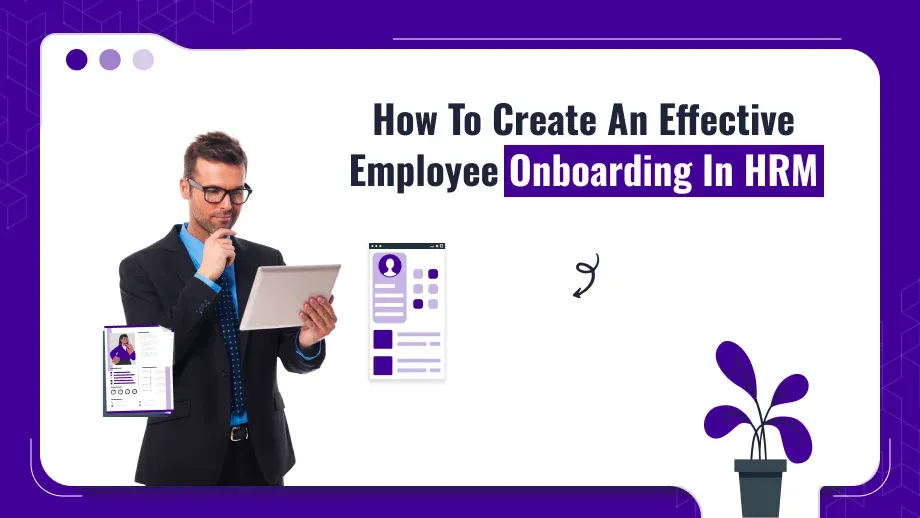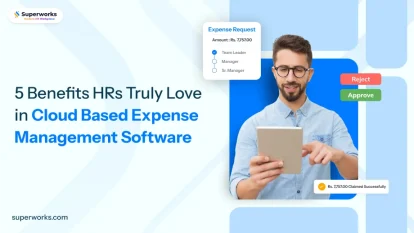
HRM onboarding – what does it mean and how significant is it?
Onboarding is a method of helping new employees get started in Human Resources Management by introducing them to the company and helping them adjust to their new work environment. This is a lot more than an initial day of orientation and can be a long time to allow employees to familiar themselves with the workplace. Effective onboarding processes impact effectiveness, retention, and employee satisfaction. What are the ways to make sure your onboarding procedure is successful in the long term?
In this piece, we’ll cover the process of onboarding, that is the steps to take, good methods, and the potential pitfalls. From pre-onboarding In HRM to the first 90 days and beyond, we will break down everything you need to create a seamless experience for new employees. We’ll take a closer look at the role of automation, along with onboarding specialists and internal links for resources, including the preboarding software, Onboarding, and much more.
What’s Onboarding in HRM?
Onboarding is the process of the process of bringing new employees to speed with their jobs and in the business as smoothly and as quickly as possible. The Orientation process is one-time and focuses on documents, but onboarding is the process, executed with a systematic approach, for integrating the new employee into the values and culture of the business and to help in bringing workflows within the business in general.
Onboarding Components:
- Pre-Onboarding: Pre-first day involves the sending of welcome emails, preparation of workspaces, and scheduling initial meetings.
- First Day and Week: Activities that allow new employees to understand the company culture, values, and systems under which they will operate.
- First 30/60/90 Days: Helping employees get established in their roles, goal setting, and continual feedback.
An onboarding specialist can design customized onboarding In the HRM program to get employees engaged and set up for success right from day one. They handle everything from initial paperwork to personal check-ins, to ensure the process aligns with the organization’s overall HR strategy.
Why Is Good Onboarding Important?
Well-designed onboarding organizations retain 50% of their employees and get 54% more productivity from new hires. No one will deny that, in the end, good onboarding will get them to feel more connected with the company, and lead to higher morale and overall satisfaction. Those who feel welcomed correctly trained and placed are extremely likely to stay for the long haul.
Good onboarding costs businesses less. New employees are an enormous cost and onboarding can either be the difference between success or failure of this decision. When it goes on smoothly, it saves time to productivity. Hence, the recruits can begin producing for their team as well as the company’s goals sooner. Plus, strong onboarding statistics reduce turnover rates which can be costly in terms of time and resources.
Plus the onboarding process affects more than just the new hire. It sets the tone for team collaboration and productivity. It creates a more harmonious work environment where employees feel supported and engaged from day one.
Steps of a Good Onboarding Process
1. Pre-Onboarding
It starts long before the new hire walks in the door. The pre-onboarding includes everything from confirming start dates and sending in the welcome emails, to making sure all paperwork is completed. You should provide an idea of what to expect on the first day for the employee at this stage.
What to do during pre-onboarding:
- Send a welcome email describing what their first day will look like.
- Set up their workspace, which might include setting up their email account, along with any tools or software they’ll require. For instance, this may involve HRMS Payroll Software in India or the HRMS software in India).
- Schedule meetings with team members they’ll be working with.
- Give access to internal tools such as digital employee onboarding platforms.
Pre-onboarding sets the scene and makes the employee feel more comfortable and ready for their first day.
2. The First Day
The first day is key to how the new hire perceives the company. Make it a positive experience by planning activities that introduce them to company culture and the team.
A good first day might include:
- A personalized welcome pack containing company swag, welcome letter, and a copy of the employee handbook.
- A company-wide intro where the new hire meets the team and understands the company values.
- A tour of the office or for remote workers a digital HR Onboarding meeting to introduce key team members and systems.
A good first day helps to reduce anxiety and makes the new hire feel part of the team from day one.
3. The First Week
The first week is when things tend to fall into place for a new hire. Make the transition a little easier by assigning a mentor or “buddy” who can answer questions and provide guidance throughout the week.
During the first week consider:
- Give an in-depth introduction to the tools and systems they’ll be using regularly.
- It could be their first task or project to get them going but not that they feel overwhelmed by.
- At this phase, you must check up on them regularly, ensure they are settling in properly, and provide them with as much support as needed.
Use of Digital Employee Onboarding Platform, Alongside human investment, you also get the use of digital employee onboarding platforms for tracking at this phase.
4. 30/60/90 Days
This phase of onboarding is all about integration. At the same time, a new employee should be given clear objectives and expectations that will allow him to slowly adjust to the position and remain motivated and productive even in the first 30, 60, and 90 days.
What to include in this phase:
- Clear goals must be established for the new employee-for example, short-term and long-term goals, including checkpoints on new tools learned, projects completed, or contributions to a team’s efforts.
- Regular sessions of feedback should be created to monitor if they are on the right path and to discuss challenges that might hinder them.
- Encourage the new hire to ask questions and give you feedback in respect of the onboarding process. Their feedback will be very helpful to you for the improvement of the experience for future hires.
Feedback is the way to keep employees on their toes, working for you rather than an object to be pushed around and used.
Onboarding in HRM improved customer satisfaction by 3.5 times.
Transform your onboarding approach with Superworks!
Best Practices in Onboarding
1. Personalisation
Employees need to be valued; thus, a personalized onboarding experience is crucial. Personalize onboarding based on the role of the person or department instance, merchant onboarding or client onboarding differs from that of onboarding in HRM or technical roles.
2. Ongoing Communication
Communication doesn’t have to end after the first day. A person should be open as long as the onboarding process is ongoing. This means that regular check-ins with the new hire endorses the support it gives and takes up issues at an early stage so that possible solutions can be undertaken.
3. Leverage Technology
Manual onboarding can be very exhausting. Convert repetitive paperwork, scheduling, and training in onboarding through the use of SaaS onboarding software. It will save more time while the different departments share the same page with a less physically exhausting onboarding process.
Tools like HRMS Payroll Software in India, as well as other onboarding tools, will ensure that everything is organized so that the company and employees can breathe easily.
4. Company Culture
Therefore, company culture must be brought to the onboarding table. The new employees must be educated on the worth of the company and how they can add their work to it. With that, they feel part of the team as well as the organization in general.
Challenges of Onboarding and Solutions
1. Inconsistency Across Departments
Onboarding that does not cut the mustard will only confuse and lower productivity in the new hire. Developing an onboarding checklist will help ensure all departments perform the same procedures and no steps are forgotten.
2. Remote Onboarding
The number of remote employees is on the rise, but onboarding them comes with its own set of challenges. One can use digital employee onboarding platforms to make the experience smooth for remote workers. This can include virtual meet-and-greets, digital handbooks, and online training sessions.
3. Overwhelming New Hires
Too much information on the first day or week can overwhelm new hires. Break up training sessions and introduce tools and systems gradually. Give them time to understand each new concept or task before you move on to the next thing.
Measuring Onboarding Success
To ensure your onboarding is effective you should measure and evaluate it regularly. Here are a few performance metrics:
- Employee Retention Rates: The rate of retention of employees is one most effective measures of an effective onboarding procedure is how long employees are in the organization for a long time.
- Timing to Performance: How quickly do new employees reach maximum efficiency? Faster integration means better onboarding.
- Employee Feedback: You’ll be able to gather good feedback from your employees on their impressions of the newly hired employee’s procedure of onboarding, whether through frequent surveys or in-person checking-ins.
- Onboarding Metrics: You’ll have to modify the process of onboarding by basing the process on your KPIs for onboarding.
Summary
Onboarding in HRM is not just a word meaning this is a process that is to be undertaken for the newly inducted employee to become a productive and engaged member of your team. Streamlining this process with the help of the best HR software India makes it more effective and efficient. It is followed through a good onboarding process by an HR software in India. The retention will be higher along with fast productivity, and overall job satisfaction will be achieved in this process. Your organization will then reap the benefits of this motivated, engaged, and productive workforce as each new employee will make you feel supported and prepared from the get-go.
By simply executing these steps – from pre-onboarding to the first 90 days and beyond—companies can make sure that their new hires do not just blend in but totally succeed in their assigned roles. To achieve this, they’ll need SaaS onboarding software, uniformity within the processes practiced, and a company culture that encourages active involvement.
Remember a good onboarding process doesn’t stop after the first week. Positive, continuous feedback, communication, and support can make all the difference in retaining top talent.





